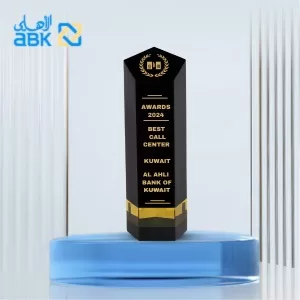Lifestyle
The Golconda Blue: Historic 23.24-Carat Blue Diamond Heads to Auction in Geneva

- Christie’s will auction the 23.24-carat Golconda Blue, the largest Fancy Vivid Blue Diamond ever offered, with royal Indian provenance, on May 14, 2025, in Geneva.
- The historic gem, set in a JAR-designed ring, is estimated to be worth $35-50 million (£28-40 million), making it one of the world’s rarest blue diamonds.
A spectacular diamond is about to make history. Christie’s has announced that The Golconda Blue, a breathtaking 23.24-carat Fancy Vivid Blue diamond, will headline their Magnificent Jewels auction on May 14, 2025, in Geneva. It’s a piece of royal history worth $35-50 million (£28-40 million) that exudes charm.
The Golconda Blue is the largest Fancy Vivid Blue diamond ever auctioned, and it is set in a magnificent ring fashioned by the renowned jeweller JAR. Its bright colour, excellent pear-shaped cut, and exceptional size set it apart. Its newly revealed royal origins provide an appealing level of intrigue and value.
A Diamond with a Royal Past
The Holkar dynasty’s passion for magnificent gemstones impacted Golconda Blue, which was mined in India’s Golconda region. It belonged to Yeshwant Rao Holkar II, the progressive Maharaja of Indore and a descendant of the Holkar family. The Maharaja and his wife, Maharani Sanyogitabai Devi, were fashion icons in the 1920s and 1930s due to their excellent taste and worldly demeanour.
The Maharaja’s father, Tukoji Rao Holkar III, bought the famous Indore Pear diamonds from Parisian jeweller Chaumet in 1913. Tukoji commissioned Chaumet in 1923 to create a one-of-a-kind bracelet featuring the 23.24-carat pear-shaped blue diamond, now known as The Golconda Blue.
Yeshwant Rao’s passion for unique jewellery creation shined through. In 1933, he named Mauboussin as his official jeweller. The French house updated most of the royal collection, including a beautiful necklace with Golconda Blue and Indore Pears. French artist Bernard Boutet de Monvel painted the Maharani of Indore wearing this necklace.
From Maharajas to Modern Collectors.
The diamond’s journey did not stop with the Indian aristocracy. Famed jeweller Harry Winston purchased the Indore Pears in 1946, followed by the Golconda Blue in 1947. He combined it with a matching white diamond in a brooch that was eventually sold to the Maharaja of Baroda. That brooch would eventually return to Winston before being modified and sold again, resulting in the diamond we see today.
For the first time, The Golconda Blue is up for auction. JAR has created a beautiful and contemporary ring that is ready to find a new home—hopefully, one that will appreciate both its beauty and its amazing history.
A True Gem of Global Importance
“Exceptional noble gems of this calibre come to market once in a lifetime. Throughout its 259-year history, Christie’s has had the honour of offering some of the world’s most important Golconda diamonds, including the Archduke Joseph, the Prince, and the Wittelsbach. With its royal heritage, extraordinary colour, and exceptional size, The Golconda Blue is truly one of the rarest blue diamonds in the world,” said Rahul Kadakia, Christie’s International Head of Jewellery.
Golconda diamonds are renowned for their extraordinary clarity and brightness, and the Golconda Blue epitomises this history. These gemstones are from India’s renowned Golconda mines. Ancient Indian literature, such as the 4th-century Arthashastra, mentions gemstones, perhaps including diamonds, although European trade in Indian jewels expanded over the ages, as reported by later travellers. By the 17th century, luminaries such as Jean-Baptiste Tavernier admired Golconda’s diamond beauty.
A One-of-a-Kind Opportunity
Whether you’re a seasoned collector, a fan of royal history, or simply someone who appreciates the finest things in life, The Golconda Blue has it all. It combines breathtaking beauty, a riveting story, and a level of exclusivity that is once in a lifetime. This May, all eyes will be on Geneva when Christie’s opens bidding on this magnificent diamond. When the gavel falls, it will not only mark the sale of a stone but also the next chapter in a narrative that began centuries ago in India and has since stretched across continents, civilisations, and time itself.



















































